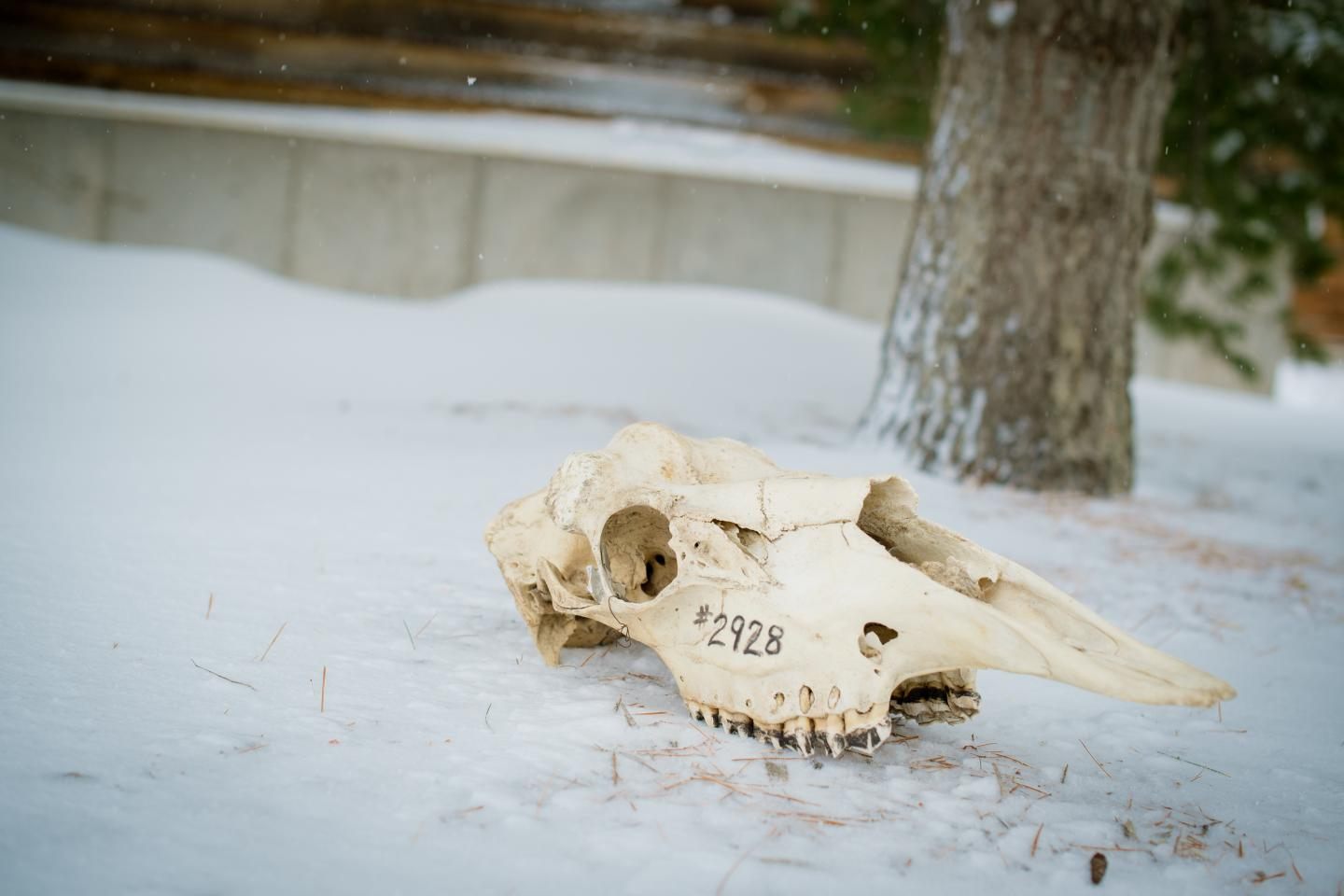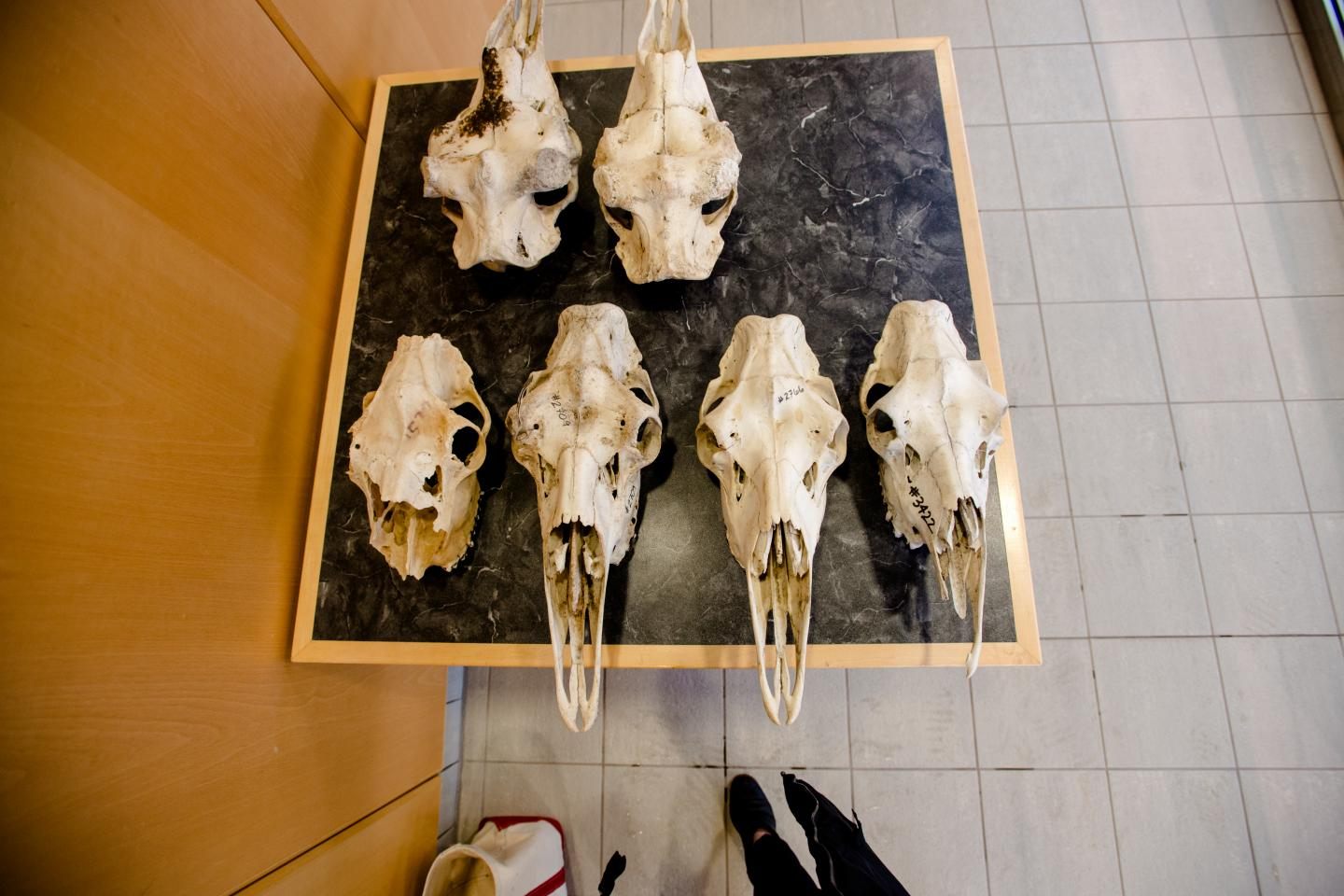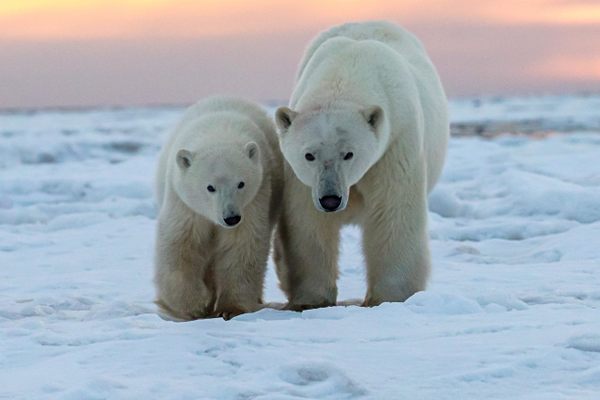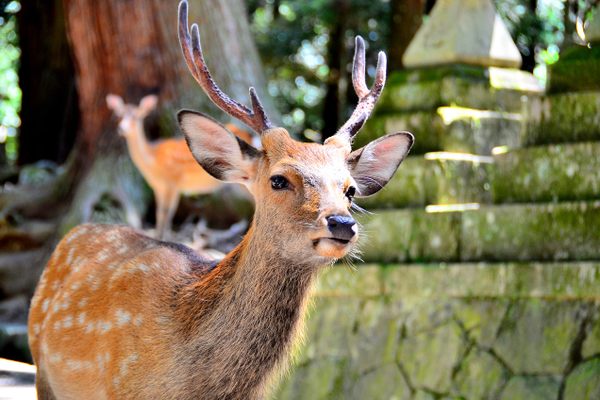The Curious Case of the Shrinking Moose Skulls
Researchers studied 40 years of craniums on an island in Lake Superior.

Many of the residents of Michigan’s Isle Royale, an archipelago in Lake Superior, are moose. They tromp through the forest to nibble on thimbleberries, or stoop in creeks to slurp aquatic plants. Their ranks have tripled in the past decade, and, just as steadily, their skulls have shrunk. Now, scientists from Michigan Technological University are studying these bones to see what they might reveal about how the animals are adjusting to a warming world.
To puzzle out something about the historical record, scientists often turn to osseous tissue for clues. But in addition to bringing elements of the long-receded past into sharper focus, bones can help scientists get a handle on broad changes that are unfolding closer to real-time. “These aren’t changes you can see out in the field,” said Rolf Peterson, a research professor at Michigan Tech who helped with the collection, in a news release. “We’re looking for trends over time in the whole population.”
To do so, the Michigan Tech team studied 662 moose craniums collected over the past 40 years. From these, they made a few observations, recently published in the journal Global Change Biology. The researchers found a correlation between less-bitter winters and declining skull sizes (the concurrent decline was about 19 percent for males and 13 percent for females). Plus, the moose calves that experienced warmer winters during the first year of their lives tended to be tinier as adults, and to die sooner.

It’s not the first time that researchers have noted animals’ bodies changing—for better or worse—at least partly in response to a changing climate. Writing in Science last year, a team of researchers concluded that warming has already influenced both species distribution and genetics, leading to morphological changes such as shorter bill lengths in some birds. These aren’t always advantageous adaptations, and they’re not necessarily a testament to resiliency. “It is important to not confuse species responses and adaptation as an indicator that everything will be okay,” lead author Brett Scheffers, a wildlife ecologist at the University of Florida, told the Guardian.
The new research also offers insight into a question that has been flummoxing scientists studying moose populations in northern Minnesota, near Lake Superior’s western shore. Over the past 12 years, the moose population there has fallen by half. “Climate is considered a main driver” in this change, said Sarah Hoy, a research fellow in the School of Forest Resources and Environmental Science (SFRES) at Michigan Tech and the study’s lead author. Its influence can be direct—as when warmer winter temperatures cause stress—or indirect, such as by increasing the range of white-tailed deer, which carry a parasitic brainworm that deer can tolerate but the moose can’t.
On Isle Royale, the deer weren’t part of the equation; the island isn’t home to any. But climate change isn’t the only explanation for shrinking skulls. The island’s wolf population has all but vanished, and since wolves are the moose’s primary predator, the moose are now jousting among themselves for the same food supply. This competition could also result in skinny—or even starving—moose, and possibly smaller skeletons.
It’s too soon to tell for sure how the moose will fare in the long run. The National Park Service may end up introducing more wolves to the island. After that, bones will tell more of the story.



















Follow us on Twitter to get the latest on the world's hidden wonders.
Like us on Facebook to get the latest on the world's hidden wonders.
Follow us on Twitter Like us on Facebook